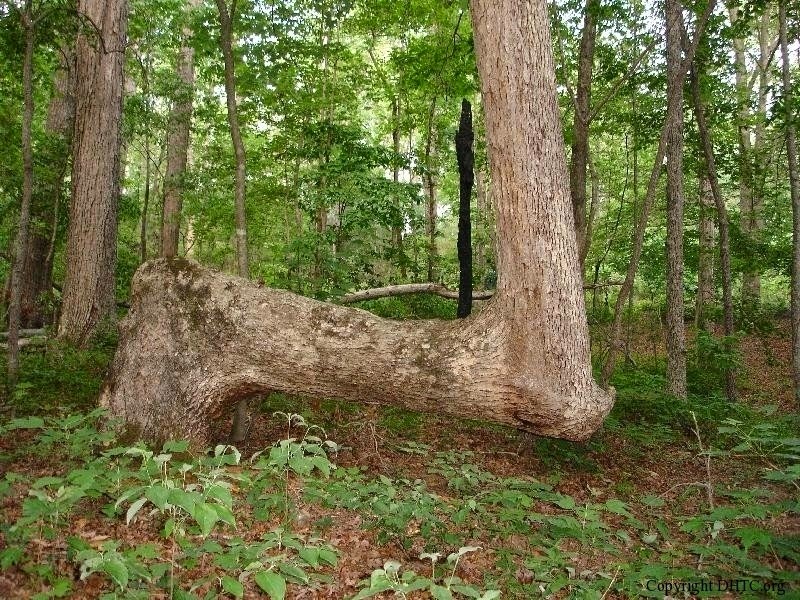All throughout North America there are trees that are peculiarly bent out of shape, but they are not some quirks of nature. Rather, they were intentionally shaped by the Native Americans so that they could be easily recognized. They are called Trail Marker Trees, and the natives used them as a marking system to denote areas of importance such as sources of food and water, or as navigational aids and landmarks that helped guide the indigenous people along the safest route in their journeys. The Trail Marker Trees differed in their appearance and formation from tribe to tribe and from region to region, but the most characteristics form is a sharp bend low on the trunk and horizontal to the ground and a second sharp bend upward, like the one shown in the picture below. Examples of these trees have been found all across the United States and throughout Canada.

Native Americans chose trees mainly from the hardwood family in their region, such as Oak and maple, because of their flexibility while young and their ability to retain shape after they have grown. They would bend trees over to form an arch, and would secure them to a stake in the ground or tie them to a large stone with a leather strap or vine. A new branch would be left to grow skyward from the top of the arch, forming a new trunk. Eventually the restraining stake is removed, leaving a knob - a distinctive characteristic of trail marker trees.
Some Trail Marker Trees are difficult to tell apart from naturally crooked trees, because of which most people don’t realize what these trees truly are. Many of these trail trees have disappeared as they were easily overlooked and fell victim to development and disaster. Many groups today are working together to make sure that trail trees are identified and protected for the history they represent. Regrettably, some group of volunteers having no actual field research and relying only on internet information have marked several naturally deformed trees as trail trees leaving some archaeologists and anthropologists sceptical and doubtful of the whole Trail Tree System business.
However, authentic examples of trail marker trees can be found at several inconspicuous locations. A very inspired group of volunteers known as the “Mountain Stewards” have documented literally thousands of Cherokee Indian marker trees in the Southern Appalachian Mountains. The location of some of the trees are kept secret to protect them. Another non-profit, Great Lakes Trail Marker Tree Society, has documented a large number of trees on their website.
A roadside "trail tree" found in Tar Hollow State Forest, Ohio. Photo credit
A trail tree in northern New Jersey. Photo credit
Sources: Great Lakes Trail Marker Tree Society / Wikipedia / University of Illinois / American Forests via TYWKIWDBI




















I have to wonder how old the trees in the pictures really are. To be a Native American trail marker tree, the tree would presumably have to be at least 200+ years old. While trees can certainly live that long (and longer) none of those look that old. Tree diameter (measured as D.B.H ) is not a very accurate indicator of age, but it does provide some idea. Condition of bark, tree vigor and overall height are other indicators, but unless the tree can be documented through old photos (obviously not as far back as 1800, but perhaps say, 1900) or some other means of written documentation, its very hard to tell tree age from just looking. Trees can also be bored with a very small drill-like tool to confirm. What we do know, however, is that a tree can be knocked over or bent by wind, ice, snow, other tree limbs, logging (much of the eastern US forest has be cut over at least twice since the early days of European settlement), all of which are more likely, yet less romantic explanations for the misshapen trees. Native American trail trees may have existed at one time, and there may even be a few survivors left today, as a few individual trees of some species have lasted as long as 400 years. The are however, few of these very old trees. None of the trees pictured look anything like a 2-300 year old tree.
ReplyDeleteI agree on how the trees shown aren't really old enough to be markers used by the original tribespeople from the areas mentioned. More likely is that later generation of settlers and residents were told of the practice and used it to mark property boundaries and such. Another use could be to un obtrusively mark areas that were rich in sought after botanicals such as ginseng
ReplyDelete